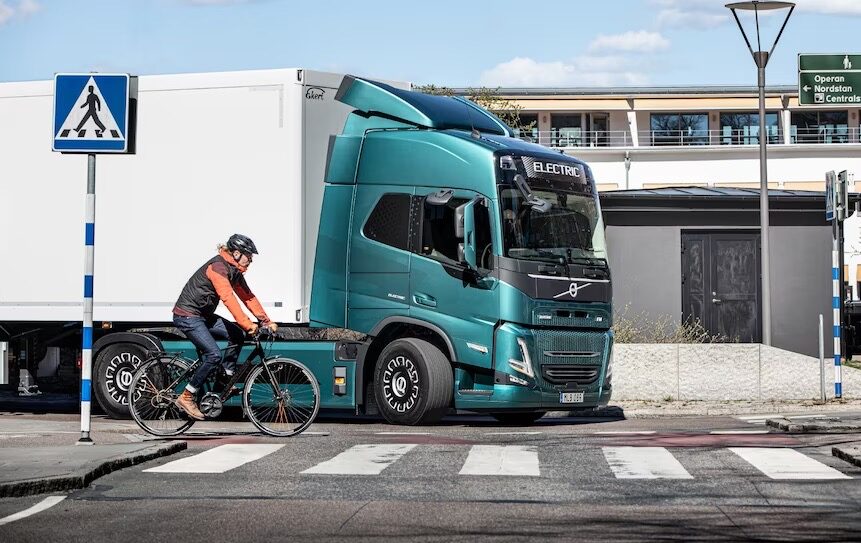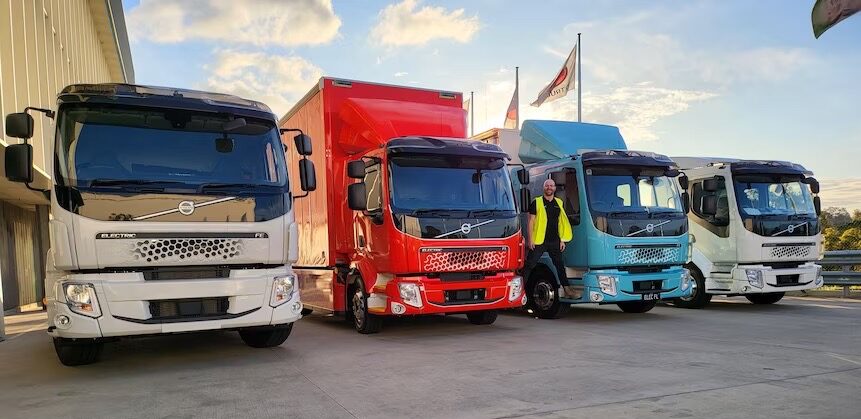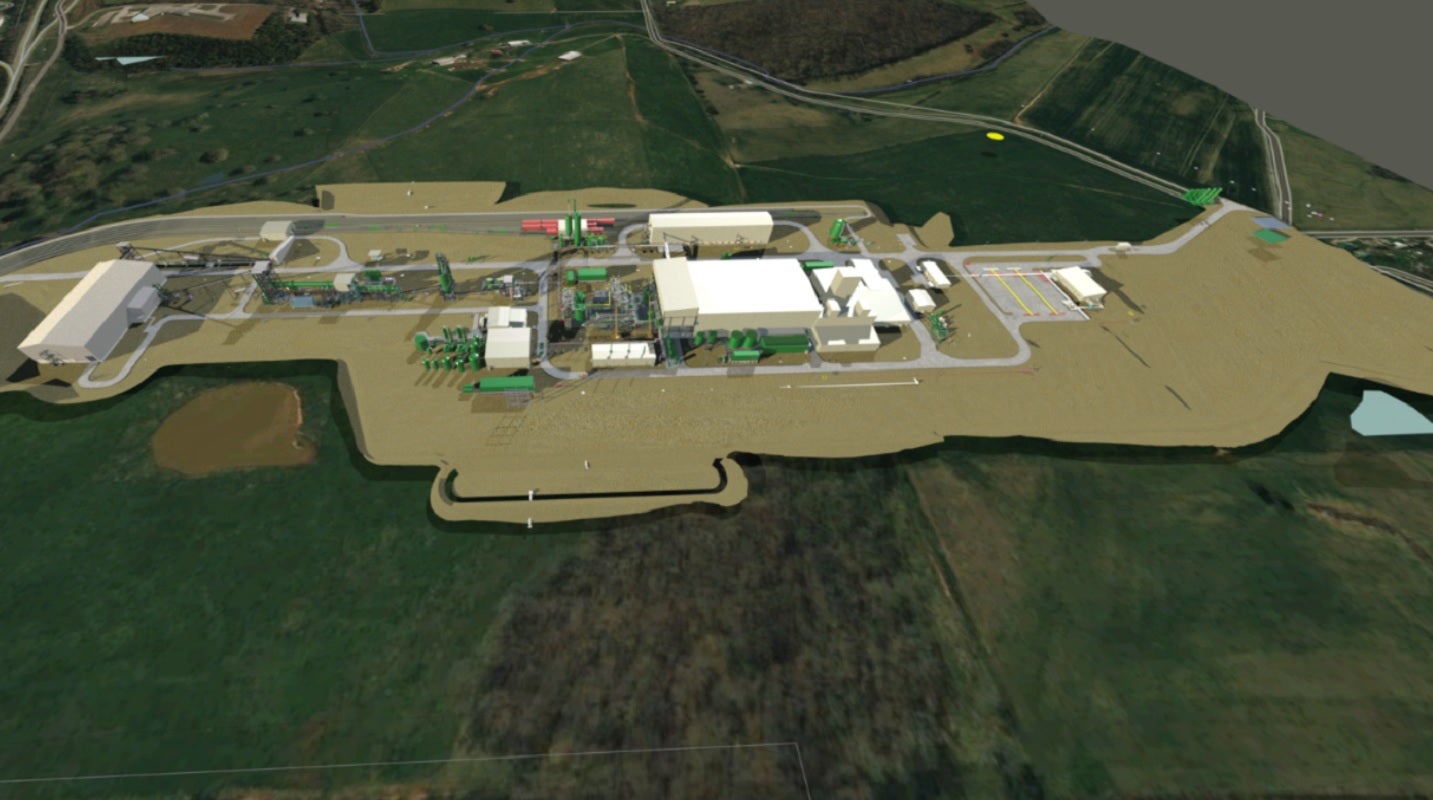Sign up for daily news updates from CleanTechnica on email. Or follow us on Google News!
Just as Australian state and federal regulations are being adapted to the transition to electric semi trucks, local councils are being urged to examine their regulations to allow quiet, less polluting electric delivery trucks to operate at night. These trucks could then charge during the day, using cheap solar and reducing running costs. Currently, curfews on noisy diesel trucks stop them operating at night. Would it be possible to exempt electric vehicles from this law? Although, an electric garbage truck would probably still be noisy, like the one that wakes me up every Friday morning at about 5 am.
Electric delivery trucks could transform how cities operate. “We don’t have to build more roads and we get less congestion during the day. It would be a win-win,” says Volvo’s e-mobility solutions manager Tim Camilleri.

Responding to customer demands to convert their existing fleets to electric, many truck makers are not only importing electric vehicles, but also manufacturing them in Australia. I have already written about Volvo and Scania. Today, I am moving down the food chain to consider smaller trucks and vans, focussing on SEA and Fuso.
An electric delivery truck wouldn’t rumble through tight suburban streets, disturbing the sleep of residents. “You notice the wind noise past the side-view mirror. You notice a squeak in a seat. There’s an opportunity for silent delivery of freight in the evening,” electric delivery truck manufacturer SEA Electric’s Asia Pacific vice president Glen Walker said. Exempting electric delivery trucks from evening curfews may lead to faster fleet acceptance.

SEA was founded in Australia in 2012. Currently, it is headquartered in the USA. “SEA Electric launched its first model in 2017 and has since released several medium and heavy-duty commercial electric vehicles including delivery trucks, garbage trucks, tipper trucks, tilt tray trucks, reefer trucks, cherry picker trucks, school buses, shuttle buses, cargo vans and passenger vans. SEA Electric’s SEA-Drive® power-system is adaptable to most OEM glider chassis platforms from Class 3 to Class 8 (3.5t to 29t).”
SEA has deployed over 200 vehicles to date globally. These are front engine cab/chassis rigid trucks and delivery vans. SEA has a process in place to return batteries to their country of origin, where they are re-deployed in large-scale storage farms.
Mr. Walker continued: “The number of quotations we have out is insanely high and the conversion rate to sales is creeping up and up and up with each passing month. Everyone wants to touch one, drive one, test one. It’s very much a snowball effect — the more competition in the marketplace, the better we all are, because we’re selling against each other, which makes each other better.”
Fuso launched its next-generation eCanter at the recent Brisbane Truck Show, announcing that it has started an Australian test program that will see the zero-emission truck running day and night, completing five double shifts in Melbourne, Victoria. This is part of a global testing program. “Fitted with a tray, the wide-cab eCanter will run half of its testing with no load and half with a full load at its Gross Vehicle Mass (GVM) of six tonnes.”
Fuso has the backing of the Daimler truck network. The website tells us: “In just five years, Japan’s first fully electric light-duty truck has already covered over 8 million kilometers globally, proving itself to be locally emissions-free, ultra-quiet, safe and reliable. Here in Australia, the first generation eCanter got to work for leading fleets including Bunnings, Toohey’s, Coles, Centurion, Goldstar, Linfox, Australia Post and Team Global Express.”
“Fuso is determined to ensure we vigorously test our trucks, diesel or electric, in local conditions, and that is what our customers expect from an OEM with a long history in Australia,” says Fuso Truck and Bus Australia Vice President Alex Müller. “The zero emission eCanter is a serious workhorse, so we need to be absolutely sure it can toil hard around the clock in rail, hail and shine on Australian roads before we hand it over to our customers.”
By the time production vehicles are available, the testing data will inform how best the eCanter can be used in individual customer operations. The next-gen eCanter has extensive safety features, an eAxle, and Power Take Off capability. It can be charged with A/C and comes with three battery configurations, enabling 70, 140, or 200 km range. These LFP batteries come with a 6-year, 200,000 km warranty. The warranty on the drivetrain is 5 years, or 100,000 km. GVW is from 4.25 to 8.55 tonnes.
Dr. Dia Adhikari Smith, the Tritium E-Mobility Research Fellow at The University of Queensland’s Dow Centre for Sustainable Engineering Innovation, says that: “We can’t achieve net-zero if we just decarbonise passenger transport.” Road freight vehicles account for 38 per cent of transport emissions.”
She has identified similar barriers to achieving net-zero in road freight that carmakers face in the decarbonisation of the passenger vehicle sector: a lack of choice, high upfront costs, and the need for charging infrastructure, particularly for heavy transport over long distances. Comments to me from both Scania and Volvo indicate that just as these issues are being resolved for cars, they would expect them to be so for trucks. Both Scania and Volvo are working towards solutions.
Although the upfront cost of an electric truck may be double or triple that of a diesel, as both Janus’ Lex Forsyth and SEA point out: the high cost of diesel means that “on average the technology will payback it’s premium over 2-4 years.”
As an electric car owner and driver, I note that this is much quicker than the ROI when comparing an electric car to a petrol one. The more you drive, the quicker the payback, obviously. Dr. Smith’s research has concluded that, “For a significant number and range of routes, battery electric trucks would likely be a suitable, operationally feasible, and cheapest [based on total cost of ownership] zero-emission technology for deployment today,” Dr Smith said. The Electric Vehicle Council estimated that it costs about $117 to fuel a diesel truck for 300 kilometres, but just $18 for an electric truck.
Sales of zero-emission trucks are minimal in Australia (a bit like electric cars were 3 or 4 years ago). SEA reports that they have sold 100 rigid trucks (like garbage or refrigerated trucks, tippers, and shuttle buses). Volvo has sold 10, with another 80 on order. As regulations change, costs are re-evaluated, and drivers are seduced by the electric experience, expect Australia’s trucking industry to accelerate into an electric future.
Have a tip for CleanTechnica? Want to advertise? Want to suggest a guest for our CleanTech Talk podcast? Contact us here.
EV Obsession Daily!
I don’t like paywalls. You don’t like paywalls. Who likes paywalls? Here at CleanTechnica, we implemented a limited paywall for a while, but it always felt wrong — and it was always tough to decide what we should put behind there. In theory, your most exclusive and best content goes behind a paywall. But then fewer people read it!! So, we’ve decided to completely nix paywalls here at CleanTechnica. But…
Thank you!
Iontra: “Thinking Outside the Battery”
CleanTechnica uses affiliate links. See our policy here.



